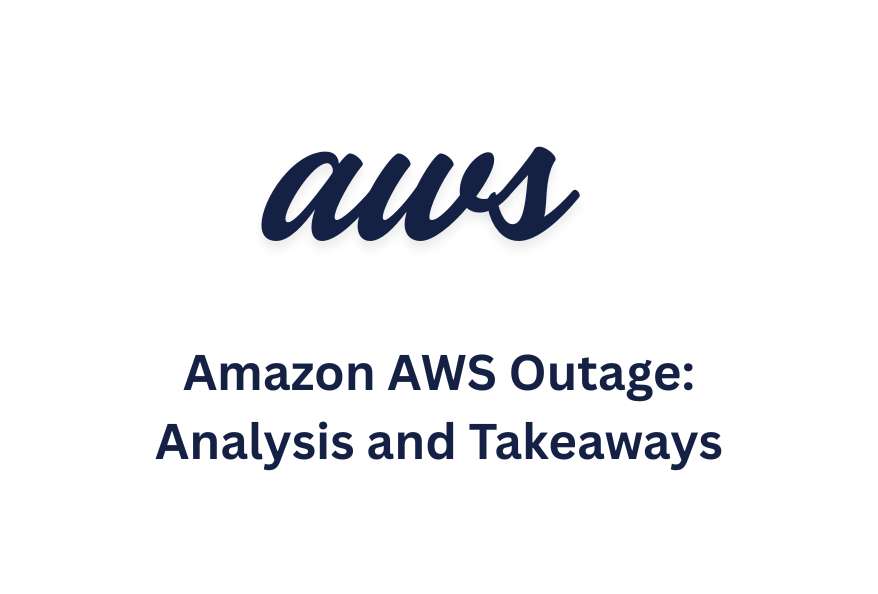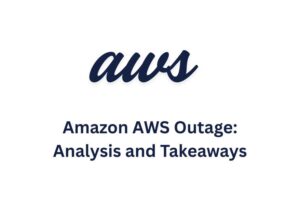Amazon AWS Outage (US-EAST-1): What Really Happened?
Estimated reading time: 3 minutes
The recent Amazon AWS Outage has once again shown how vulnerable the cloud infrastructure ecosystem can be. On October 19, 2025, a sudden glitch in the US-EAST-1 region disrupted multiple services that power major websites and applications across the internet.
AWS Outage (US-EAST-1): A Quick Overview
The AWS Outage began with a significant DNS issue, which prevented many Amazon services from communicating with one another. As a result, DynamoDB, a core component used by countless AWS-based applications, became unresponsive. Consequently, many dependent services also failed.
Amazon engineers identified the problem within minutes. However, because so many interlinked systems rely on DynamoDB, recovery took longer than expected. Although the AWS team has already resolved the DNS issue, several services are still catching up as systems gradually sync back to normal.
How the Chain Reaction Broke AWS Services
To understand the scope of the Amazon AWS Outage, it’s important to follow the chain reaction:
- Step 1: DNS connectivity failed in the US-EAST-1 region.
- Step 2: Internal AWS communication broke down.
- Step 3: Key database services such as DynamoDB stopped responding.
- Step 4: EC2 instance launches and Lambda functions started failing.
- Step 5: Restoring DNS connectivity fixed base-level communication, but systems continued to sync slowly.
Because AWS directly supports thousands of businesses, even short disruptions lead to widespread downtime. Many developers and organizations experienced failed requests, delayed executions, and missing database connections during the outage.
Why This Outage Matters So Much
Although outages are not rare in large cloud infrastructures, AWS holds a dominant market share. Essentially, any hiccup at Amazon Web Services impacts the internet’s backbone. This event highlights the risks of centralization, where thousands of companies rely heavily on one provider.
Moreover, AWS’s US-EAST-1 region plays a central role in many critical applications. Whenever it fails, ripple effects move across multiple continents. Therefore, even though the DNS glitch lasted just under an hour, its aftershocks will linger for much longer in application logs and delayed job executions.
AWS’s Quick Response Shows Experience
To their credit, Amazon’s cloud team demonstrated quick detection and transparency. They issued multiple updates through their Service Health Dashboard, helping users track restoration progress in real time. Clear communication helps reduce panic, especially during widespread downtime events.
One industry expert remarked,
“This outage reminds everyone that even the biggest cloud providers face human and network limits.”
Despite the setback, AWS’s overall uptime reliability remains one of the highest in the tech industry. Frequent audits, infrastructure redundancies, and continuous improvement in disaster recovery processes help minimize future risks.
The Road Ahead After the Amazon AWS Outage
In the coming days, AWS engineers will probably publish a Post-Incident Summary (PIS) describing what went wrong and how they are improving failover systems. The tech community eagerly awaits transparency and lessons learned from this outage.
For enterprises, this is another wake-up call. They should consider multi-region or multi-cloud strategies to avoid single points of failure. As dependency on cloud ecosystems deepens, resilience becomes just as vital as innovation.
Additionally, to stay updated with the latest developments in STEM research, visit ENTECH Online. Basically, this is our digital magazine for science, technology, engineering, and mathematics. Further, at ENTECH Online, you’ll find a wealth of information.
Reference
- Amazon AWS Health Dashboard: https://health.aws.amazon.com/health/status


